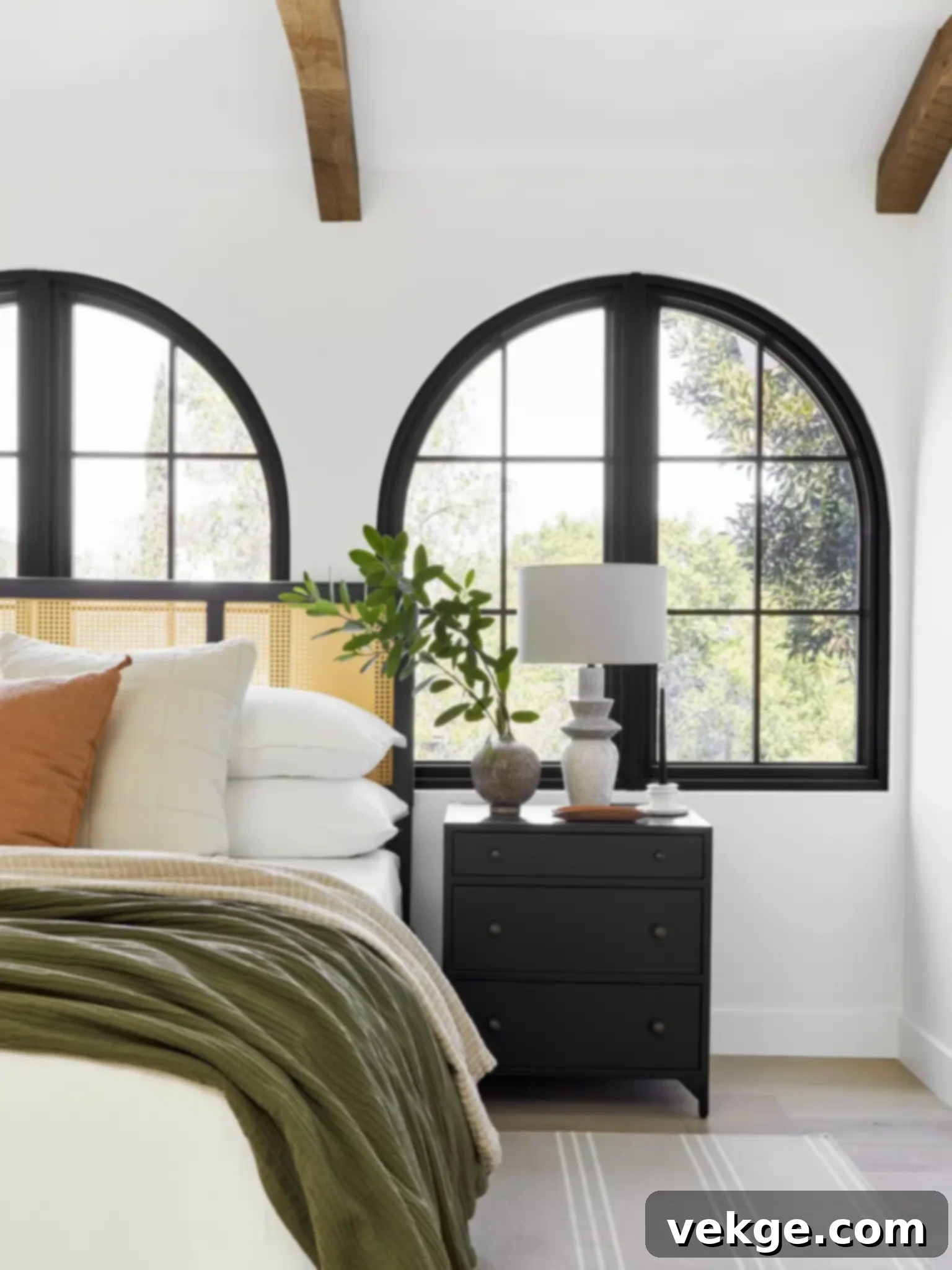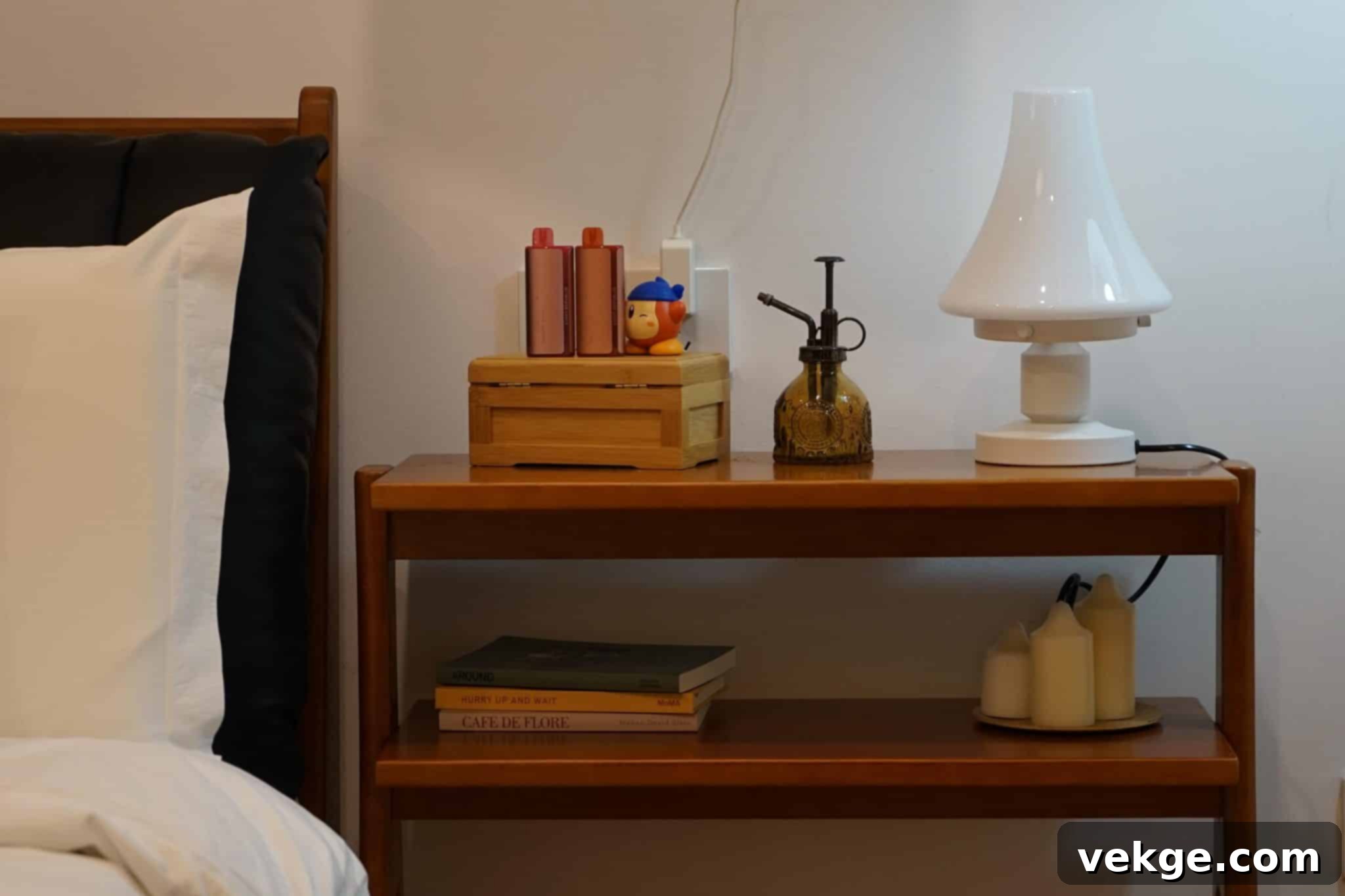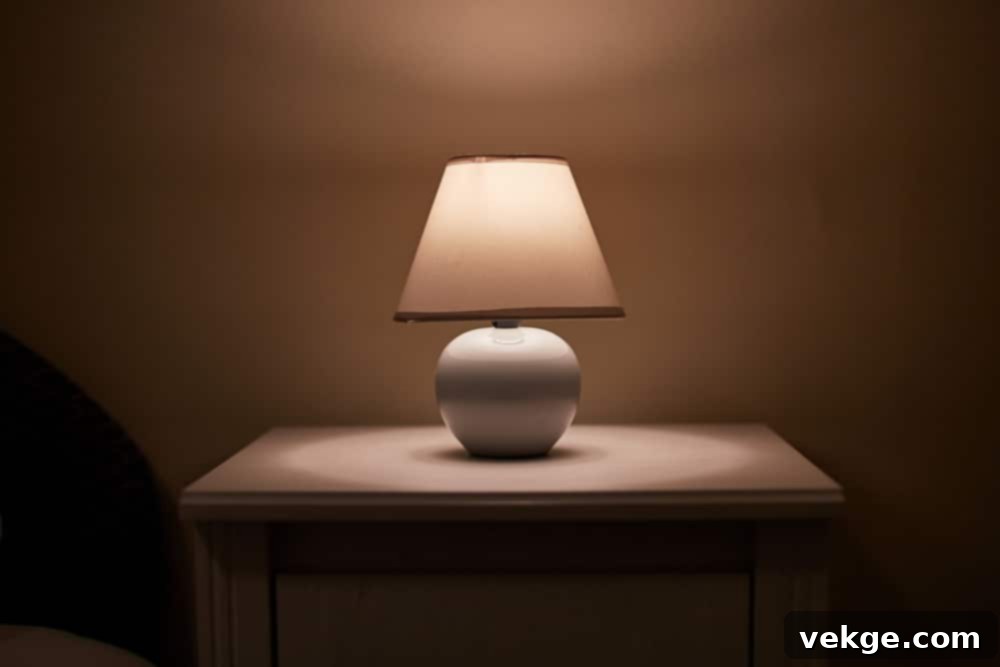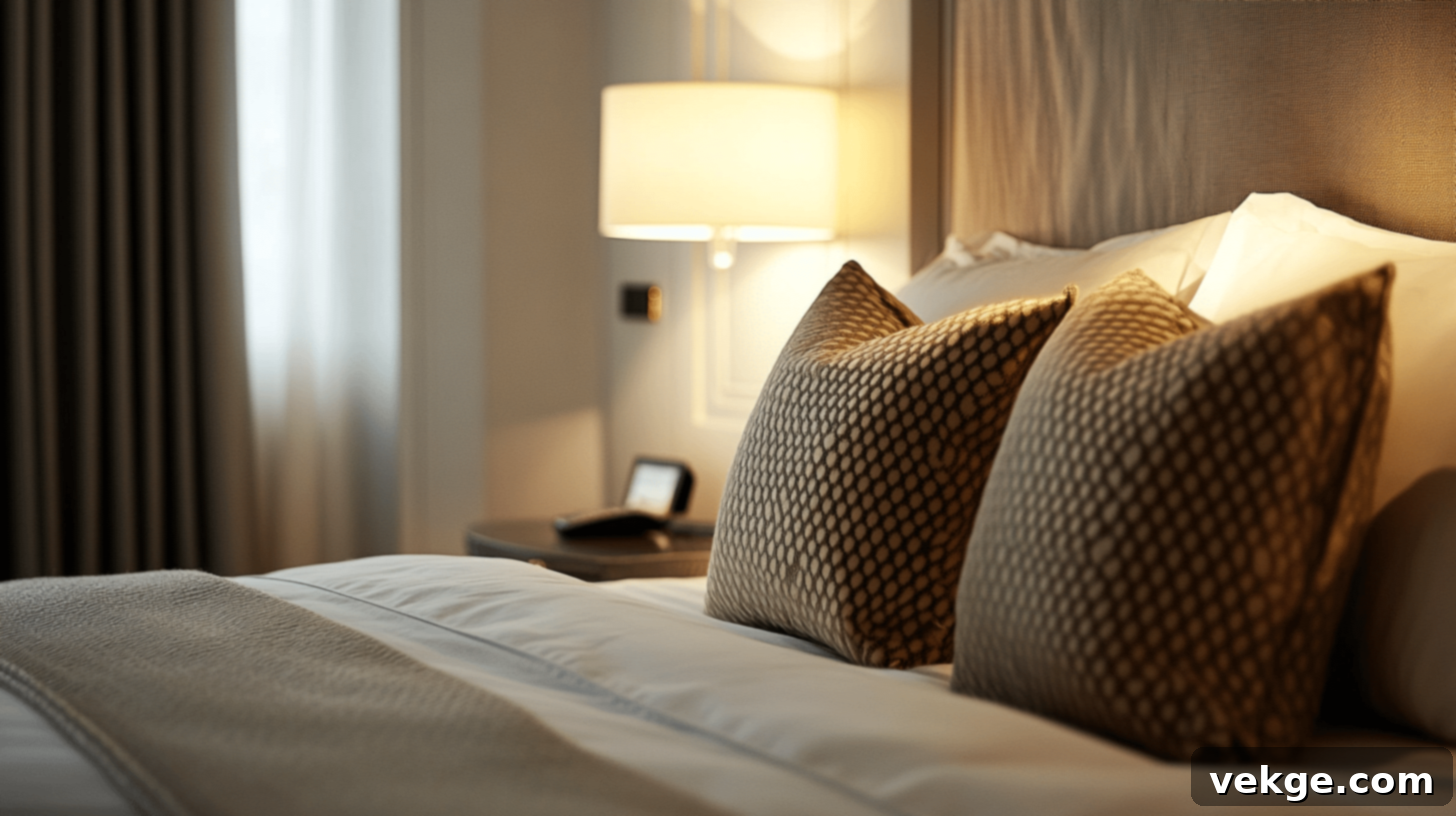Illuminate Your Sanctuary: The Ultimate Guide to Choosing the Perfect Bedside Lamp
A bedside lamp is far more than just a source of light; it’s a pivotal element in crafting the perfect bedroom sanctuary. It offers comfort, enhances functionality, and profoundly influences the overall aesthetic and mood of your personal space. Choosing the right bedside lamp involves a thoughtful consideration of various factors, from its primary purpose and design harmony with your decor to its practical features and how it complements your unique lifestyle. This comprehensive guide will walk you through every essential aspect, ensuring you select a lamp that not only brightens your room but also elevates its style and comfort.
1. Define Your Bedside Lamp’s Primary Purpose
Before you even begin to browse designs, the most crucial step is to identify the primary function of your bedside lamp. Understanding your lighting needs will significantly narrow down your choices and lead you to a lamp that truly serves you.
- Reading Light: If you are an avid reader who enjoys delving into books or magazines before sleep, your lamp needs to provide focused, directional illumination. Look for features like adjustable arms, gooseneck designs, or shades that funnel light downwards to prevent disturbing a partner and to reduce eye strain. The goal here is clarity and concentration.
- Ambient Lighting: For those who prioritize creating a serene, warm, and inviting atmosphere, a lamp with a soft, diffused glow is ideal. This type of lighting is perfect for winding down, relaxing, or simply adding a layer of warmth to your bedroom’s general illumination. Lamps with fabric shades or frosted glass can achieve this beautifully.
- Decorative Accent: Sometimes, the lamp’s role is primarily aesthetic. It might serve as a sculptural element, adding a pop of color, texture, or an interesting silhouette to your nightstand. While still providing some light, its main contribution is to the room’s visual appeal and overall design scheme.
- Task Lighting: Beyond reading, you might need a lamp for other bedside tasks like knitting, writing in a journal, or applying hand cream. In these cases, a lamp that offers adjustable brightness and a clear, focused beam will be most beneficial.
By clearly defining its purpose, you ensure your chosen bedside lamp is not just an object but a functional tool that enhances your daily routine and mood.
2. Match the Lamp Size and Scale to Your Nightstand and Bed

Proportion is key in interior design, and your bedside lamp is no exception. The size of your lamp must be in harmonious proportion with both your nightstand and your bed. An oversized lamp can overwhelm a small nightstand, making the space feel cluttered and unbalanced. Conversely, a minuscule lamp on a grand nightstand can appear lost and fail to provide adequate illumination, not to mention looking visually insignificant.
Achieving Perfect Proportion:
- Lamp Height: A good rule of thumb is that the bottom of the lampshade should be roughly at your shoulder height when you are sitting up in bed. This ensures the light is cast over your shoulder, preventing glare and providing optimal illumination for reading. For an average bed, this often translates to a total lamp height (base + shade) of around 24 to 30 inches. However, adjust this based on your specific bed frame and mattress height.
- Nightstand Dimensions: Consider the width and depth of your nightstand. The lamp’s base should ideally occupy no more than one-third of the nightstand’s surface area, leaving ample space for essentials like a book, a glass of water, or your phone. If your nightstand is particularly narrow, a lamp with a slender base or even a wall-mounted sconce might be a more practical choice.
- Bed Scale: A larger bed (king or queen) can accommodate more substantial lamps, whereas a twin or full bed might call for more delicate or compact designs. The visual weight of the lamp should balance the bed without dwarfing it.
Always measure your nightstand and consider your bed’s height before purchasing a lamp. This careful consideration ensures both aesthetic balance and functional comfort.
3. Choose the Right Lampshade for Optimal Light Distribution
Choosing the right lampshade is paramount, as it directly influences how light is diffused, directed, and perceived in your bedroom. The shade’s shape, material, and color each play a critical role in shaping the lamp’s output and the room’s ambiance.
Shade Characteristics and Their Impact:
- Shape:
- Drum Shades: Offer a clean, modern look and distribute light evenly, both upwards and downwards. Excellent for general ambient lighting.
- Empire Shades: Tapered from top to bottom, these shades provide a slightly more focused beam downwards while still allowing some upward light. They suit both traditional and transitional styles.
- Bell Shades: Often more ornate, these shades direct light primarily downwards, creating a more intimate and focused pool of light. Ideal for a classic or romantic aesthetic.
- Square/Rectangular Shades: Complement contemporary or minimalist decor, echoing clean lines and providing a modern edge.
- Material:
- Fabric Shades (Linen, Cotton, Silk): These are excellent for diffusing light, creating a soft, warm glow. Lighter fabrics offer more overall room illumination, while darker fabrics will create a more dramatic, focused beam.
- Paper Shades: Often found in Scandinavian or minimalist designs, paper shades provide a very soft, ambient light.
- Metal or Glass Shades: These materials tend to direct light more precisely. Metal shades, especially opaque ones, will direct light purely upwards and downwards. Frosted or colored glass can diffuse light with a unique hue.
- Color:
- White or Light-Colored Shades: Maximize light output and distribute brightness widely, making them ideal for reading or general room illumination.
- Dark-Colored Shades: Absorb more light, creating a focused, dramatic beam and a more intimate, cozy atmosphere. They are often chosen for their aesthetic contribution rather than their light-spreading properties.
When selecting a lampshade, consider both its light-distributing properties and how its style and texture will integrate with your existing bedroom decor.
4. Harmonize Your Bedside Lamp with Your Bedroom’s Style and Aesthetics

Your bedside lamp is a prominent decorative element, and its style should seamlessly integrate with the overall aesthetic of your bedroom. It’s an opportunity to reinforce your chosen design theme or even introduce a subtle contrasting element that adds visual interest.
Matching Your Lamp to Your Decor Style:
- Modern & Minimalist: Opt for sleek lamps with clean lines, geometric shapes, and finishes like brushed nickel, matte black, or chrome. Simple drum or rectangular shades work well.
- Traditional: Look for lamps with classic silhouettes, decorative bases made of brass, bronze, wood, or ceramic, and perhaps ornate or pleated bell shades. Detailed finials can add an extra touch of elegance.
- Farmhouse & Rustic: Consider lamps with distressed wood bases, antique metal finishes, or shades made from natural linen or burlap. Industrial-inspired designs can also fit here.
- Bohemian: Embrace lamps with unique textures, global patterns, or handcrafted elements. Rattan, woven materials, or ceramic bases with a natural finish are excellent choices.
- Industrial: Lamps featuring exposed bulbs, metal cages, concrete bases, or pipe-like structures are perfect for this edgy style.
- Mid-Century Modern: Look for lamps with atomic shapes, tapered legs, and materials like walnut wood, brass, or colorful glass.
Beyond the overall style, pay attention to the lamp’s finish. Whether it’s a shiny brass, a warm wood, a cool ceramic, or a contemporary metal, the finish should either complement other metallic accents, furniture woods, or color schemes in your room to create a cohesive and polished look. A well-chosen lamp acts as a silent storyteller, reinforcing the narrative of your bedroom’s design.
5. Prioritize Essential Functionality and Features
While aesthetics are vital, the functionality of your bedside lamp directly impacts its usefulness and your comfort. Modern lamps offer a plethora of features designed to enhance convenience and adaptability.
Key Functional Features to Consider:
- Dimmable Settings: A dimmer switch is invaluable for setting the perfect mood. Bright light for reading, a softer glow for relaxing, and a very low setting for navigating the room at night without harsh brightness. Lamps can come with rotary dimmers, touch-sensitive controls, or even smart dimming capabilities.
- Adjustable Arms and Necks: If reading in bed is a priority, an adjustable swing arm or a flexible gooseneck allows you to direct light precisely where you need it, minimizing glare and eye strain. This is particularly useful if you share a bed and want to avoid disturbing your partner.
- Integrated USB Charging Ports and Power Outlets: In our increasingly connected world, having easy access to charge your phone, tablet, or smartwatch directly from your bedside lamp is a game-changer. Many modern lamps integrate USB-A, USB-C, or even traditional power outlets into their bases, decluttering your nightstand.
- Wireless Charging Pads: For ultimate convenience, some advanced lamps feature built-in wireless charging pads for compatible devices, eliminating the need for cables entirely.
- Touch Controls: For a sleek, minimalist look and easy operation, touch-controlled lamps allow you to turn them on/off or adjust brightness with a simple tap on the base.
- Smart Home Compatibility: Lamps that integrate with smart home systems (like Alexa, Google Home, Apple HomeKit) offer unparalleled control. You can manage them with voice commands, schedule on/off times, or even change color temperature, all from your smartphone.
- Switch Type: Consider the placement and type of switch. Is it a traditional rotary switch on the cord, a toggle switch on the base, or a pull chain? Choose what feels most convenient for you when reaching from your bed.
By assessing which functionalities are most important to you, you can select a lamp that perfectly aligns with your daily habits and technological preferences.
6. Select the Right Bulb for Ideal Ambiance and Efficiency

The bulb you choose has a profound impact on both the quality of light and the energy efficiency of your lamp. Gone are the days when a bulb was just a bulb; today’s options offer incredible versatility.
Understanding Bulb Types and Characteristics:
- LED Bulbs: These are the gold standard for modern lighting. LEDs are incredibly energy-efficient, long-lasting, and produce very little heat. They come in a vast range of color temperatures and brightness levels.
- Lumens (Brightness): Instead of watts, focus on lumens when choosing a bulb. For a bedside lamp, a bulb producing 450 to 800 lumens (equivalent to a 40W to 60W incandescent bulb) is generally sufficient for reading and ambient light.
- Color Temperature (Kelvin – K): This determines the “warmth” or “coolness” of the light.
- Warm Light (2700K – 3000K): Emits a soft, yellowish glow, similar to incandescent bulbs. Ideal for creating a cozy, relaxing, and inviting bedroom ambiance, perfect for winding down.
- Neutral White (3500K – 4000K): A balanced light, good for general tasks but might feel a bit too cool for a bedroom’s primary mood lighting.
- Cool White / Daylight (5000K+): Mimics natural daylight, providing bright, crisp illumination. Best for tasks requiring high concentration, but generally too harsh for a bedroom setting.
For bedside lamps, stick to the warmer end of the spectrum (2700K-3000K) unless you specifically need bright, task-oriented light.
- Color Rendering Index (CRI): A higher CRI (80+) indicates that a bulb will render colors more accurately. This is important if you want your decor and skin tones to appear natural under the lamp’s light.
- Smart Bulbs: These LED bulbs connect to Wi-Fi or Bluetooth, allowing you to control brightness, color temperature, and even color (RGB) via an app or voice commands. They offer ultimate flexibility for creating different moods.
- Bulb Shape: Consider the bulb’s shape in relation to your shade. Standard A-shape, globe (G-shape), or candelabra (B-shape) bulbs are common, and some fixtures might require specific sizes.
Always check the maximum wattage or lumen rating for your lamp fixture before inserting a bulb to ensure safety and optimal performance.
7. Consider How Light Reflects and Interacts in the Room
The effectiveness of your bedside lamp isn’t solely determined by the lamp itself; it’s also heavily influenced by how its light interacts with the other elements in your bedroom. Colors, textures, and finishes all play a significant role in how light is absorbed, reflected, and dispersed throughout the space.
Factors Influencing Light Reflection:
- Wall Colors:
- Lighter Walls (White, Cream, Pale Gray): These colors are highly reflective, bouncing light around the room. This makes the space feel brighter, more open, and can amplify the perceived light output from your lamp.
- Darker Walls (Navy, Charcoal, Deep Green): These colors absorb light, making the room feel more intimate, cozy, and often dramatic. While they create a strong ambiance, they will also require your lamp to work harder to illuminate the space.
- Furniture Finishes: Glossy or metallic furniture surfaces will reflect light, potentially creating interesting highlights or even glare. Matte or textured finishes will absorb light, contributing to a softer, more diffused overall effect.
- Mirrors and Reflective Decor: Strategically placed mirrors can work wonders in amplifying light and making a room feel larger. A mirror behind your bedside lamp can double its impact. Similarly, objects with shiny surfaces will catch and reflect light.
- Window Treatments: Heavy, dark curtains will absorb natural light during the day and can make the room feel darker overall, making your artificial lighting even more crucial. Lighter, sheerer curtains will allow more natural light to penetrate.
- Ceiling Height and Color: A high, light-colored ceiling will help reflect light downwards, contributing to a brighter room. A lower or darker ceiling will absorb more light, making the room feel cozier but also potentially darker.
When thinking about the best bedroom colors or introducing new decor, consider how these choices will interact with your chosen bedside lamps to achieve your desired lighting effect and mood.
8. Balance Your Bedroom Lighting for Harmony and Comfort
Creating a balanced lighting scheme around your bed is essential for both aesthetics and functionality. Whether you have one nightstand or two, the goal is to achieve visual harmony and even illumination.
Achieving Lighting Balance:
- Symmetrical Arrangement (Matching Lamps): The most common approach for beds with two nightstands is to use identical lamps on each side. This creates a classic, balanced, and orderly look that is visually pleasing and provides consistent light for both occupants. This strategy emphasizes formality and calm.
- Asymmetrical Arrangement (Mixing and Matching): For a more eclectic or personalized look, you can choose two different lamps. The key here is to ensure they still complement each other in terms of scale, material, or overall style. For instance, two lamps of similar height but different bases (e.g., one ceramic, one metallic) or different shade shapes can work beautifully if they share a common color or design element. The goal is visual interest without chaos.
- Consistent Light Output: Even if your lamps are mismatched in style, try to ensure their light output (lumens and color temperature) is similar. This prevents one side of the bed from feeling significantly brighter or warmer than the other, maintaining a comfortable and harmonious environment.
- Layered Lighting: Your bedside lamps are just one component of your bedroom’s overall lighting plan. Consider how they integrate with overhead lighting (like a ceiling fixture or recessed lights) and other accent lighting (such as floor lamps or wall sconces). The bedside lamps often serve as essential task and ambient lighting, complementing the broader scheme.
The right balance in your bedside lighting contributes significantly to a bedroom that feels both thoughtfully designed and inherently comfortable.
Light Up Your Bedroom: A Masterclass in Bedside Lamp Selection
Choosing the perfect bedside lamp is truly an art form—a delicate dance between style, essential function, and ultimate comfort. It’s about finding that ideal fixture that not only fulfills your practical lighting needs, whether for late-night reading, setting a relaxing mood, or simply serving as a beautiful decorative accent, but also elevates the entire look and feel of your bedroom.
By meticulously considering factors such as the lamp’s specific purpose, its proportional harmony with your nightstand and bed, the light-diffusing qualities of its shade, and its aesthetic alignment with your decor, you empower yourself to make a truly informed decision. Furthermore, delving into the nuances of functionality—like dimmable settings or integrated charging ports—and understanding the impact of bulb choice and light reflection ensures that your lamp serves you in every possible way.
Ultimately, a well-chosen bedside lamp does more than just banish darkness; it creates an inviting atmosphere, reflects your personal style, and enhances your daily rituals. Invest the time in selecting lamps that not only meet all your practical requirements but also infuse your personal sanctuary with a touch of elegance, warmth, and unparalleled comfort.
